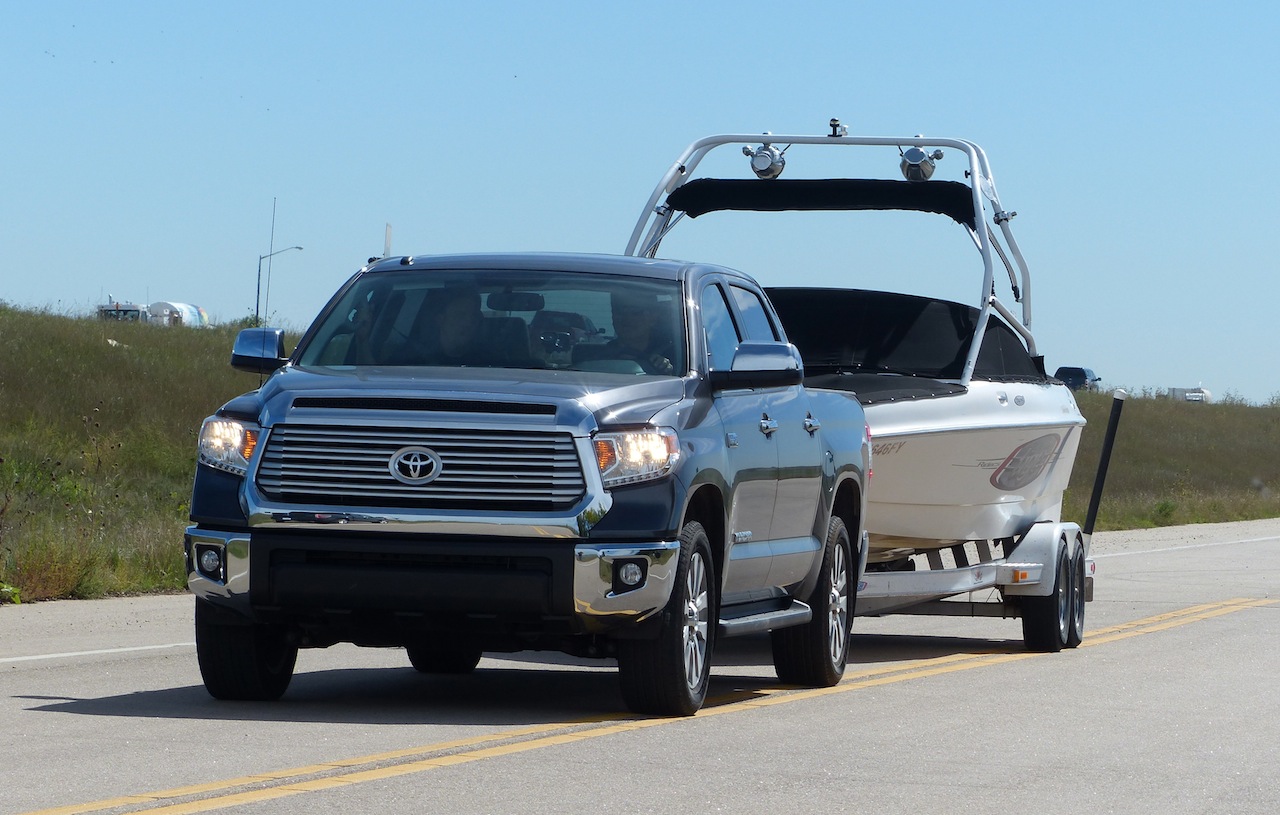A quick guide to hitch systems and how they’re used
A Toyota Guide To Hitching Attachments And Accessories
Your best bet for a safe haul is to use the right hitch and know how to attach it. Below is a quick guide to hitch systems and how they’re used.
Carry Or Distribute?
The most common hitches are weight-carrying and weight-distributing. Both are designed to slide into your vehicle’s towing receiver hitch – found on some trucks and SUVs.
Weight-carrying hitches simply carry all the hitch weight of the trailer. You drop the trailer on, lock it down and go. They’re mostly used with lightweight trailers, such as an ATV or tent trailer.
A weight-distributing hitch is a heavy-duty system that uses distribution bars to spread the load weight more evenly. These hitches increase stability when towing a heavier travel trailer.
Weight-distributing hitches utilize spring bars that help distribute the weight. They are typically matched by the hitch manufacturer to the amount of weight you plan to tow. Sway control devices can be added to help prevent trailers from swaying too much. Hitching up with one of these systems is a complex process. You should have a qualified RV center show you how. Fortunately, once you’ve got it down, it only takes a few minutes to hitch up.
Hitch Classes And Carrying Capacities
The hitch you use depends on the weight you plan to pull and/or the type of hitch receiver on your truck. The various hitch classes and their rated carrying capacities for a load are as follows:
Class I – Up to 2000 lb.
Class II – Up to 3500 lb.
Class III – Up to 6000 lb.
Class IV – Up to 10,000 lb.
Class V – Up to 12,000 lb.
Note: The maximum tongue weight these hitches are designed to accommodate is typically 10% of the actual weight of the trailer (gross weight). Tongue weight is the downward force that the tongue of the trailer applies to the hitch of the tow vehicle.
Trailers light enough to be handled by a Class I or Class II hitch receiver typically don’t need a weight-distributing hitch. A trailer heavy enough to require a Class III or better hitch does. With a weight-distributing hitch in place, the gross trailer weight limits increase: Class III to 10,000 lb.; Class IV to 14,000 lb.; Class V to 17,000 lb. A weight-distributing hitch spreads the load out over the truck and trailer so the receiver doesn’t have to bear all of the weight. That’s why it can handle a larger, heavier trailer.
Make sure your trailer and tow vehicle aren’t overloaded, your tires are properly inflated and you’re using the correct hitch for the job. Whatever hitching system you use, double-check every connection and make safety your number-one priority. That’s your best bet to have a safe haul.











